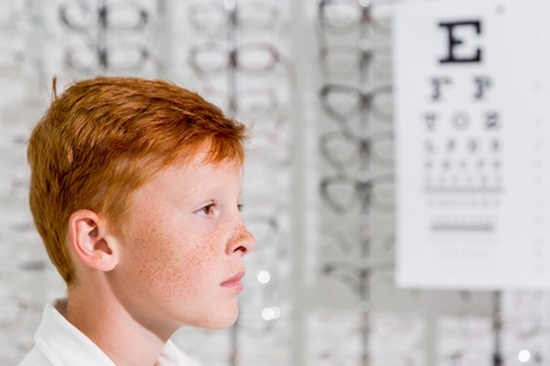A Comparison of Lower Eyelid Retraction in Normal Individuals with Positive versus Negative Orbital Vector
The present study aimed to compare lower eyelid retraction (LER) in individuals with a positive orbital vector with that of individuals with a negative orbital vector. MATERIALS AND METHODS: This cross-sectional study was conducted on 123 normal individuals including 64 men and 59 women aged 20–80 years. After the individuals underwent Hertel exophthalmometry, two side-view and front-view photos were taken using a camera. The orbital vector angle and the extent of scleral show were then measured in millimeter, using the Photoshop software. Eventually, the recorded data were analyzed through statistical software. RESULTS: The findings of this study showed that LER has a significant correlation with orbital vector angle and the extent of proptosis (P < 0.05). The mean value of orbital vector angle in individuals without LER was 9.76°, while this figure was calculated to be − 13.65° in individuals with LER. The mean protrusion value based on Hertel exophthalmometry was 14.08 mm in individuals without LER...

The article "A Comparison of Lower Eyelid Retraction in Normal Individuals with Positive versus Negative Orbital Vector" explores the relationship between lower eyelid retraction (LER) and the orbital vector angle in a population of normal individuals. This cross-sectional study involved 123 participants, aged 20 to 80 years, who underwent Hertel exophthalmometry and had their orbital vector angles and scleral show measured using photographs analyzed with Photoshop software.
The study found that LER is significantly correlated with both the orbital vector angle and the extent of proptosis. Individuals without LER had a mean orbital vector angle of 9.76°, while those with LER had a mean angle of -13.65°. The extent of proptosis, measured by Hertel exophthalmometry, was also higher in individuals with LER, averaging 16.27 mm compared to 14.08 mm in those without LER. The scleral show, which is the visible portion of the sclera below the iris, was positively correlated with proptosis and negatively with the orbital vector angle.
The findings suggest that individuals with a negative orbital vector are more likely to experience LER and increased scleral show. This correlation is important for understanding the anatomical factors that contribute to lower eyelid malposition and for guiding surgical approaches to address these issues. The study highlights the importance of considering the orbital vector in the assessment and management of lower eyelid retraction to prevent complications such as increased scleral show and to improve aesthetic outcomes in surgical procedures like blepharoplasty.

_1_crop.png)

Leave a comment